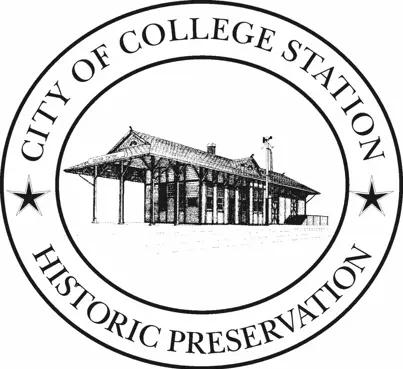Historical Landmarks

Through our Historical Marker Program, area residents can document buildings, homes, or subjects with a commemorative plaque awarded by the Historic Preservation Committee. Buildings or homes that are at least 50 years old may qualify. Your home will qualify if it was one of the original campus houses moved off the Texas A&M campus, or if someone of historical significance lived in your home.
Applications are submitted to the Historic Preservation Committee and are reviewed and approved. If approved, the applicant pays $400 for the plaque which can then be presented at a regular city council meeting. Historical Marker Program Application Packet
Historic Campus Homes
When established in 1876, the Agricultural and Mechanical College of Texas sat on a mostly bare prairie several miles from Bryan, the nearest town. Transportation was difficult over primitive roads, so it was a matter of convenience – if not a necessity -- for faculty and staff to live on campus. Thus the college began to build houses, situated mostly on the west side of the original campus between Guion Hall and the railroad tracks. According to research by David Woodcock, Professor Emeritus of Architecture at Texas A&M, 109 houses were on campus in 1938. They ranged in size and style from large Queen Annes to small bungalows and cottages, and even five two-story brick homes. Housing was assigned by the college administration, with the larger, nicer homes going to ranking faculty. Gradually, a small community – which would eventually become the town of College Station – grew up around the campus. The first residential developments were launched in the 1920s, starting with College Park and Oakwood south of the campus, and later College Hills to the east. Many of the faculty and staff bought lots and built homes there. In 1939, A&M’s board of directors passed a resolution that the campus houses were to be vacated. The maintenance expense had become a burden, transportation had improved, and the new neighborhoods had alleviated the problem of living off campus. Many of the campus houses were burned or demolished, but over the years others were sold and moved to surrounding areas. The first sales occurred in 1941 and the last in 1972. Over the years, a number of those houses also disappeared, either burned or torn down to accommodate new development. Those remaining are scattered through the community.
View the Historic Campus Homes brochure for more details. Hard copies are available in the brochure rack at College Station City Hall.

